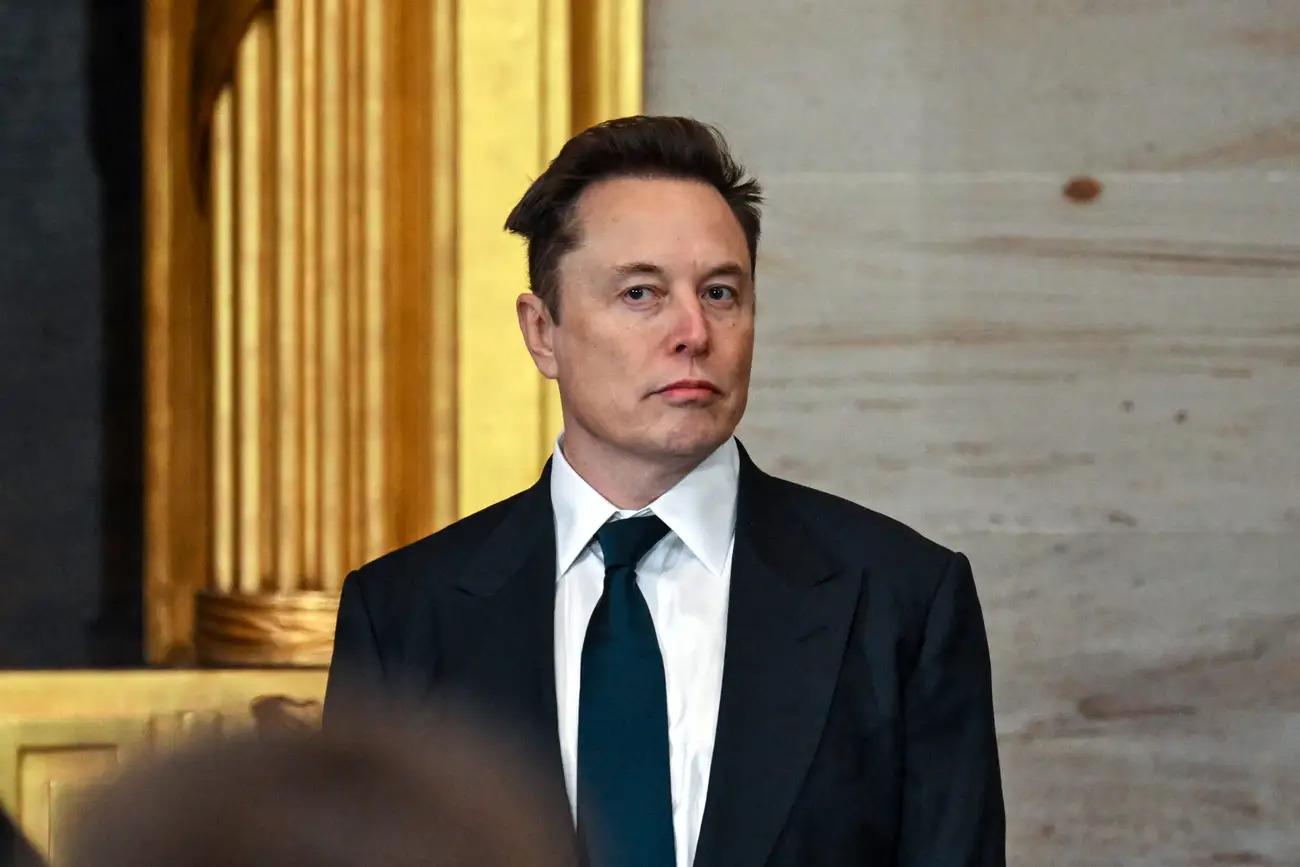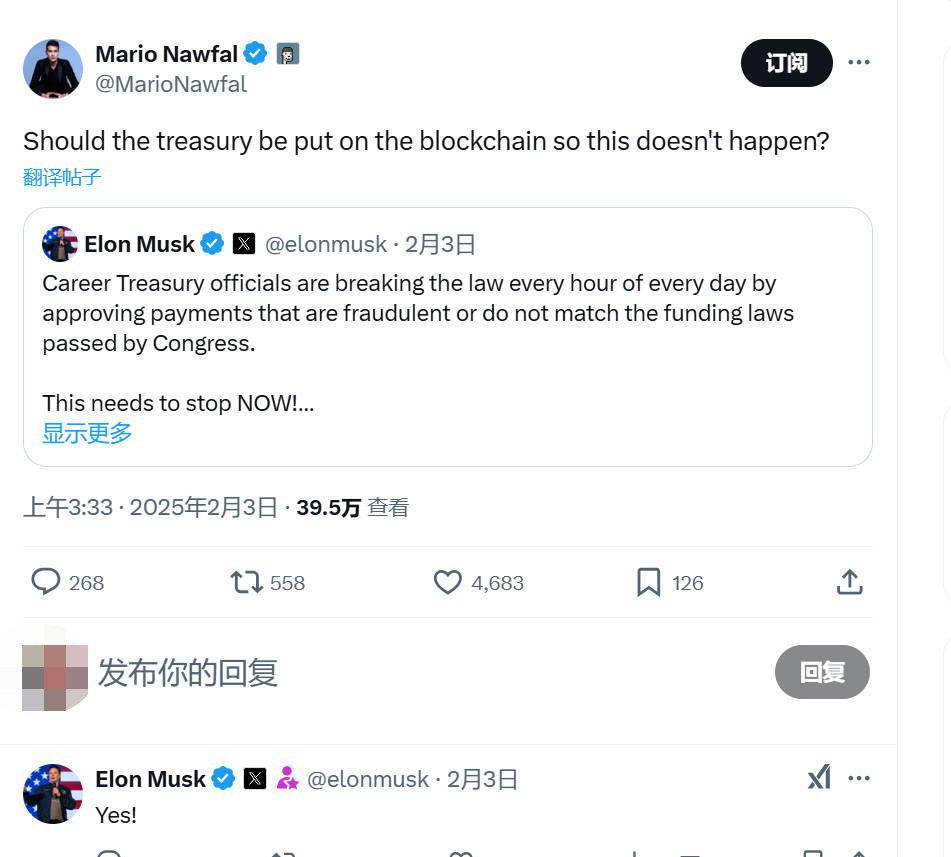On February 13, the website of the U.S. Department of Government Efficiency (DOGE) was officially launched. It is reported that DOGE is considering using blockchain technology to reduce government costs. Which blockchain network is expected to be favored?

Author: Weilin, PANews
On February 13, the website of the U.S. Department of Government Efficiency (DOGE) was officially launched to publish details and evidence of government cost cuts. It also marked the latest development in the department’s efforts to reduce U.S. government costs. As of the afternoon of February 13, according to doge-tracker data (based on data compiled on DOGE Twitter), Musk’s Department of Government Efficiency had saved U.S. taxpayers $37.89 billion, which accounted for only Musk’s goal of reducing U.S. government spending by $2 trillion.
On February 9, Coinbase CEO called for increased transparency in government spending through blockchain technology. “Great progress, DOGE,” Brian Armstrong wrote in a February 9 platform X post. “Imagine if every government expenditure could be done transparently along the chain, that would make auditing easier.” On February 10, Cathie Wood, founder of asset management company Ark Invest, also expressed support for Musk’s idea of putting all U.S. government spending on blockchain, commenting that “transparency, efficiency, security: win-win, win-win.”
DOGE is considering using blockchain technology to reduce government costs
According to a report by Bloomberg in late January, DOGE is considering using blockchain technology to reduce government costs, and people familiar with the matter revealed that relevant internal discussions are underway. If DOGE launches a plan, the scale of this plan will be large and may be adopted in multiple government departments.
Bloomberg quoted people familiar with the matter as reporting that in relevant discussions, some people mentioned the use of blockchain to track federal spending, protect data, make payments, and even manage buildings. A person familiar with the matter said people associated with DOGE have met with representatives of multiple public blockchain networks to evaluate technology. A person who traveled to Palm Beach, Florida, in December last year proposed several blockchain applications to Trump transition team officials, focusing on the technology’s potential to protect important government data and track the flow of funds.
On February 3, Musk shared his views on bringing the U.S. Treasury deal online. In a question post on platform X, Musk responded vigorously: “Yes!”

The U.S. Department of Government Efficiency was formally created by an executive order signed by President Trump on January 20 and is responsible for modernizing federal technology and software to maximize government efficiency and productivity. Trump said the department will work with the White House Office of Management and Budget to identify spending cuts and provide recommendations by July 4, 2026.
Its leader is entrepreneur Musk. It was originally planned that Vivek Ramaswamy would lead with Musk, but Vivek withdrew for some reason before the formal appointment. DOGE has offices in the Eisenhower Executive Office Building and has approximately 20 employees. A person familiar with the matter said Musk recruited about 100 volunteers to write code for his project before Trump took office.
Musk is promoting the use of blockchain technology to force government transparency, but he is not the first to propose the idea. In April 2024, former US presidential candidate Robert F. Kennedy Jr. said he wants to roll the entire federal budget. “Every American can view every budget in the entire budget at any time, 24 hours a day, 24 hours a day,” the politician told an audience at a rally in Michigan. We will have 300 million pairs of eyes on our budget. If someone spent $16,000 on a toilet seat, everyone would know.”
Kennedy’s proposal had widespread support from small government and sound money advocates, who believed that U.S. government spending was out of control.
Which blockchain network is expected to be favored?
Jean Rausis, co-founder of decentralized financial platform Smardex, said Musk’s proposal to move the U.S. Treasury to blockchain could make the United States a “de facto global leader in blockchain innovation.” “While it is difficult to say which blockchain will be up to this task, the important thing is that it must be permission-free. Otherwise, the promised transparency will be just empty talk. But if the U.S. Treasury accepts decentralized infrastructure, it could be a catalyst for the beginning of the convergence of the Web2 and Web3 worlds.”
Immediately after the Bloomberg report was released, Cardano founder Charles Hoskinson said on X,”I think this task should be done jointly by Cardano, Bitcoin and Midnight. Hey, DOGE master Musk, come to us, we will help for free.”
On January 26, Haseeb Qureshi, managing partner of Dragonfly, predicted that the U.S. Government Accountability Office (GAO) may launch an AVAX sub-chain in 2025 to report public expenditures, with all expenditures traceable on the chain through stablecoins. The wallets of government agencies and contractors are made public every day and analyzed by public data detectives.
Currently, there are use cases on Avalanche. On July 30 last year, it was reported that the California Department of Motor Vehicles had digitized 42 million car title certificates on the Avalanche blockchain to detect fraud and simplify the ownership transfer process.
In addition, Ava Labs (the company behind the Avalanche blockchain) has partnered with Deloitte and the Federal Emergency Management Agency (FEMA) to launch a new disaster assistance platform to help the U.S. government streamline disaster compensation applications submitted to the Federal Emergency Management Agency.
The idea of applying blockchain to large-scale projects is not new, although applying it to large entities like the U.S. government remains an untested concept. As early as 2022, the U.S. General Services Administration (GSA), under its government IT program, studied the introduction of ledger systems (such as blockchain) into daily federal government use. The agency held the U.S. Federal Blockchain Forum in 2017 and is studying how to use smart contracts in patents, trademarks, IT use and foreign aid delivery. According to public reports in 2022, The Delaware Blockchain Initiative has also explored blockchain technology in data security in public records organizations and the private sector.
In addition to the Cardano and Avalanche mentioned above, Movement Labs ‘MOVE token prices rose significantly on January 28, amid rumors that the company is advising Musk on DOGE. The modular network has reportedly contacted the organization, although the news has not yet been confirmed. Not long after, Movement Labs founder Rushi Manche posted on X in response to the news that World Liberty Financial had purchased a large amount of MOVE, saying: “Strategic Move reserves. We are proud to be the first altcoin, the first modern blockchain platform, and the first alternative virtual machine under the new government. MOVE is made in the United States.”
In addition, the Trump family project World Liberty Financial recently officially announced a partnership with Ondo Finance, which launched the Layer 1 blockchain Ondo Chain for institutions, but this cooperation is mainly for the RWA track.
As of the afternoon of February 13, judging from the position of World Liberty Financial on Arkham Intelligence, the project not only holds ONDO and MOVE, but also holds a large amount of ETH. As a deployment network for the president’s family project, Ethereum may also cooperate with the government., has a certain first-mover advantage.
What challenges will the U.S. government face in further using blockchain technology? Chainlink community contributor Zach Rynes wrote on X: “It is highly unlikely that the U.S. government will uniformly use one blockchain to cover all departments and institutions. Do you think the EPA and FDA ledger requirements are exactly the same as the DoD and DHS? Probably not.”
He said the U.S. government will eventually use multiple private and public ledgers for a variety of different purposes, such as improving spending transparency or automating manual processes. What is certain is:
- All of these different public/private blockchain ledgers need to be able to communicate and share data between institutions through cross-chain interoperability standards;
- Institutions need to be able to seamlessly connect their existing back-end systems and infrastructure to the various public/private chains used by governments through an abstraction layer;
- Institutions that use blockchain to automate manual processes need access to external data resources in order to securely trigger smart contract functions using the oracle.
- A unified platform is needed to meet all of these off-chain data, cross-chain interoperability, and legacy system connectivity requirements.
As Musk pushes the U.S. Treasury Department to link transactions, blockchain technology may be moving towards a completely new area of application. The support of Coinbase CEO Brian Armstrong and ARK Invest founder Cathie Wood has added more attention to the topic. In the future, which blockchain platform will stand out and become the pillar of the government’s digital transformation may have a profound impact on the entire encryption industry.



